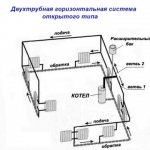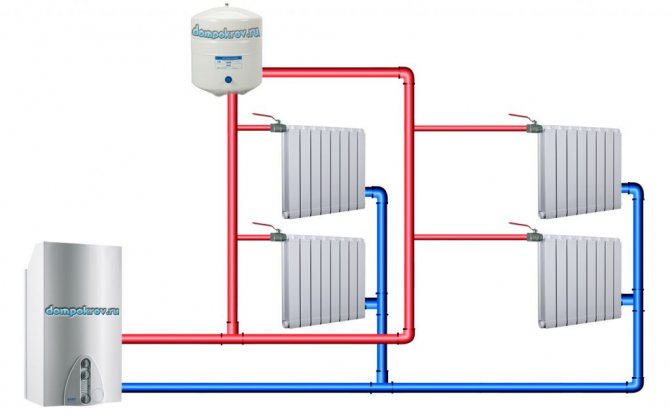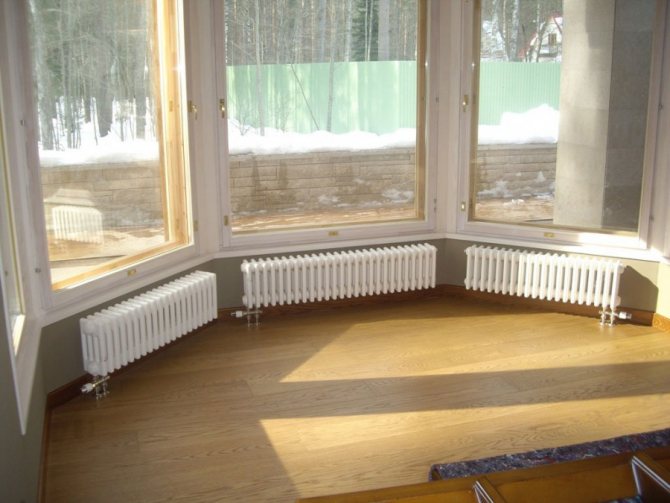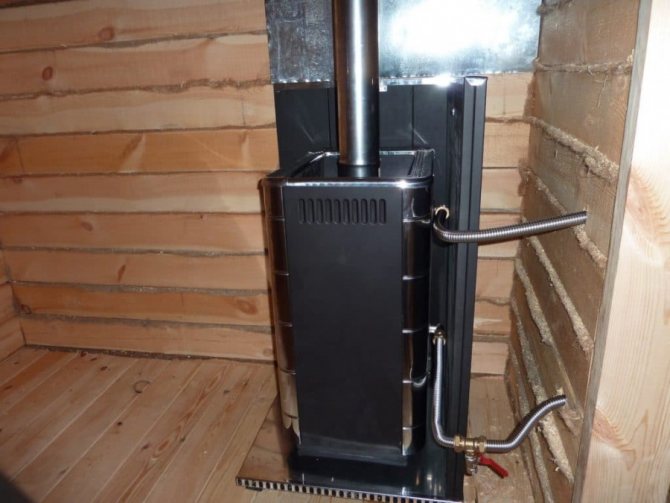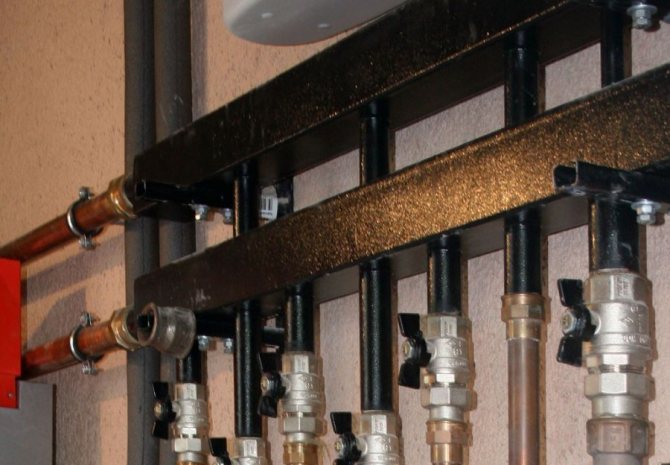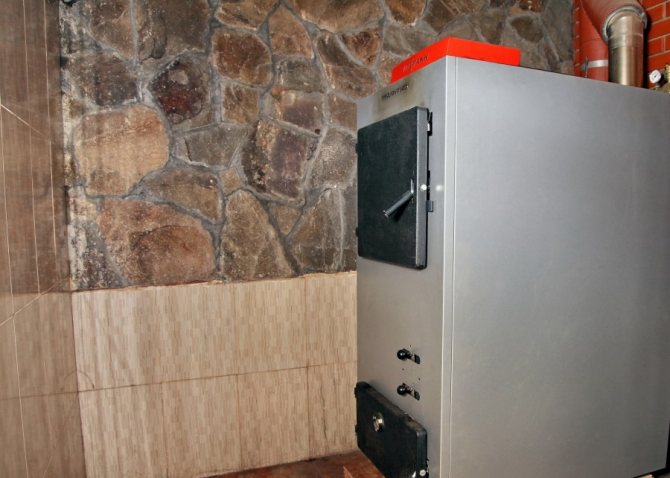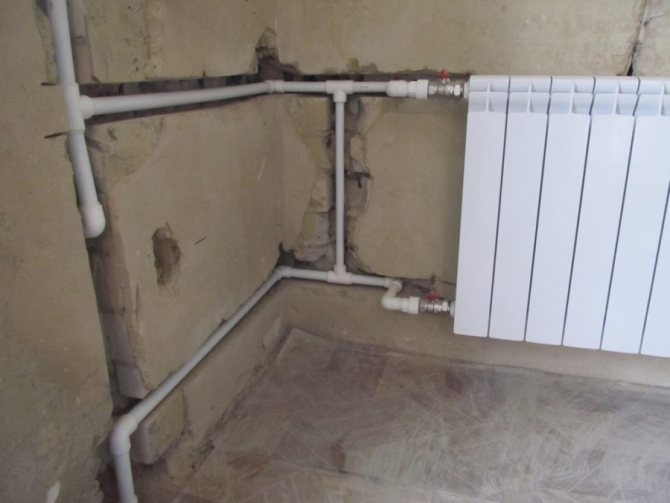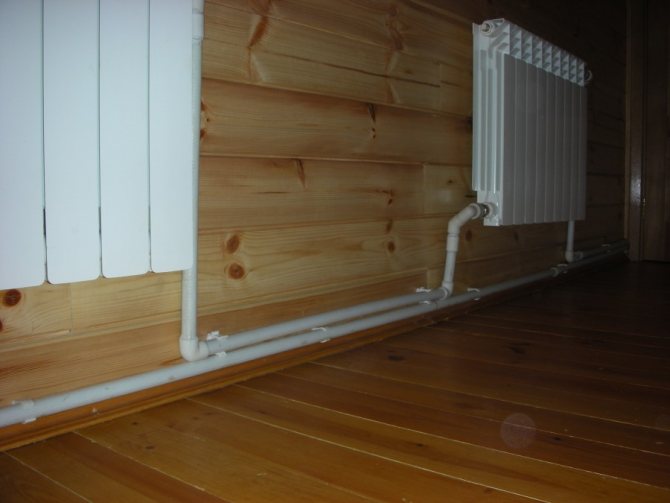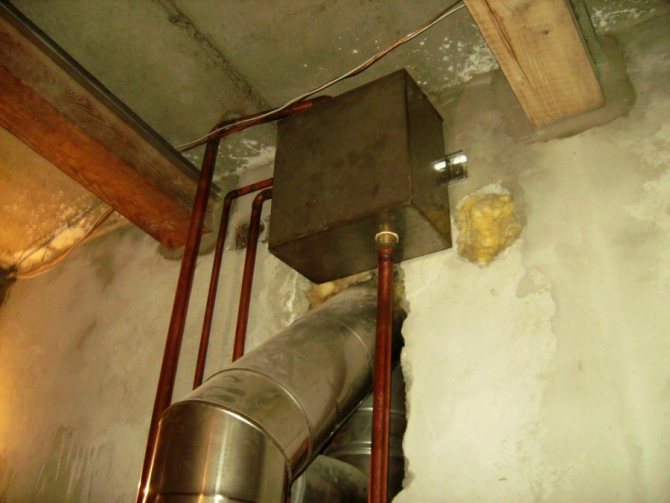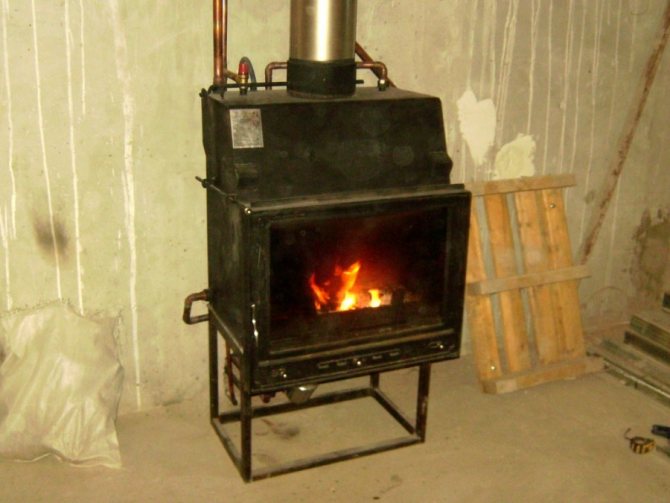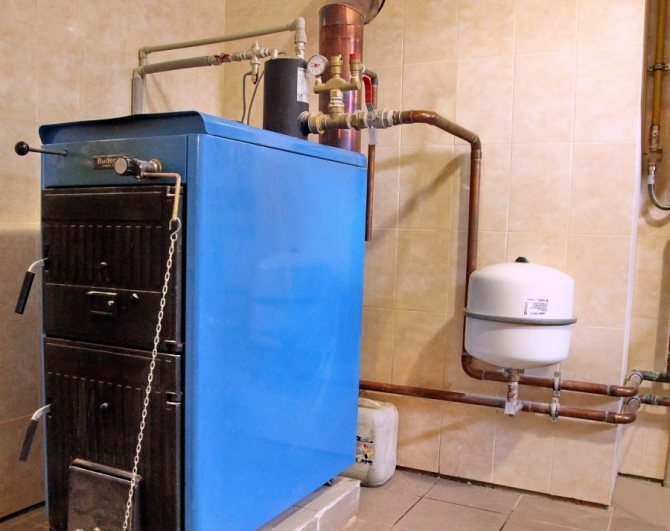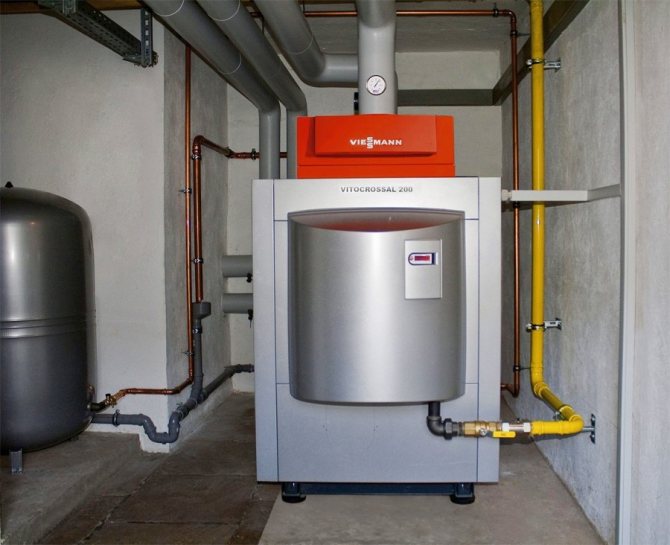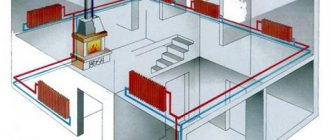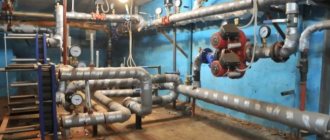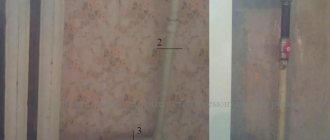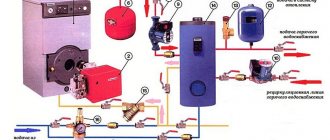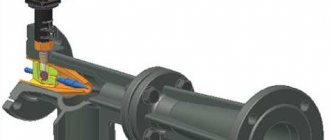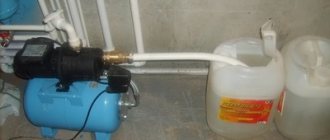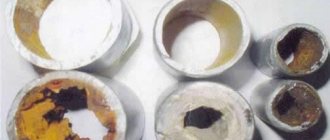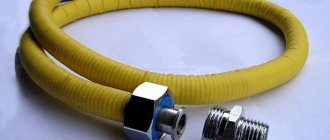How the natural circulation heating system works
The main task of the water heating system - this is to make the coolant circulate through the pipes. In order for the house to warm up, hot water from the boiler must flow into pipes and radiators. The natural circulation heating system works on the principle of gravity. The liquid moves through the pipes in a gravity way without using a pump. The density and weight of the liquid becomes less when heated, and after cooling it returns to its original state.
In such a device, there is virtually no pressure. According to calculations, you can see that with a pressure of a 10-meter water column, there is a pressure of 1 atmosphere. Turns out that in the heating device of a one-story house the pressure will be from 0.5 to 0.7 atm., and in a two-story house - no more than 1 atm.
Advantages and disadvantages of natural circulation heating
As with any device, water heating with natural circulation has its advantages, but also disadvantages. Why is the system good?
- Simple installation and maintenance, easy system start-up. All installation can be done by yourself.
- No need to buy expensive equipment.
- The system works stably. The heat carrier gives the greatest heat output and maintains the required temperature in the room.
- No dependence on electricity. The device will continue to work if the power is cut off.
- If the house is well insulated, then with such a system you can save a lot.
- No pump that makes a lot of noise.
- If maintenance is carried out on time, the heating device can work for over 35 years.
Cons of the system:
- Despite the fact that the heating system requires few materials, the costs will become much higher when the local resistance of the pipeline decreases. Because you will have to install larger pipes.
- The house warms up much more slowly.
- If pipes pass through unheated rooms, then these areas should be insulated. Otherwise, there is a risk that the liquid will freeze.
- Such a heating system is only suitable for private houses with an area of no more than 100 sq. m., since it operates within a radius of up to 30 meters. This is due to the fact that the system has a small circular head.
- The main condition is an attic in the house. It is there that the expansion tank is installed.
Open
It is characterized by the fact that the coolant is in contact with the environment in an open-type expansion tank. The principle of operation of the system as a whole does not change: the prepared coolant, due to the difference in the densities of the hot and cold layers, enters the pipeline with slopes.
They are not used for those with forced circulation, because the tank itself creates the pressure necessary for the circulation of the coolant in the system.
The main advantage is the absence of a circulation pump in such schemes, which reduces energy consumption.
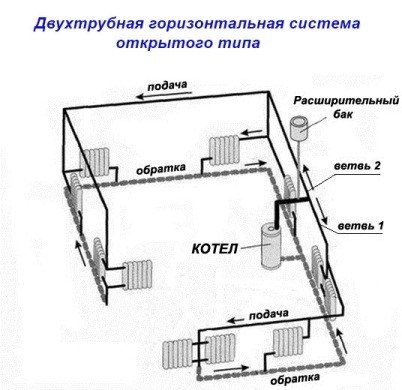
Scheme of an open two-pipe system
Types of natural circulation systems
Before creating a circuit for heating a private house, first calculate the amount of heat required for the premises. The calculation includes data on the boiler, placement and diameter of pipes, as well as the level of thermal insulation of the outer walls. Even the smallest errors in calculations can affect the quality of home heating. Therefore, it is better if all the calculations are carried out by specialists. Heating systems are of several types:
- Open and closed type (differ by expansion tanks).
- One-pipe and two-pipe type (heating radiators are connected in different ways).
Open system
The open device includes a reservoir (open tank), which is equipped with a pipe (emergency overflow). The pipe is connected to the sewer system or taken out into the street. The tank is installed under the ceiling, sometimes in the attic. An open-type tank can be made of any size with your own hands, which is its main advantage. Has an affordable price... Disadvantages of the device:
- You constantly need to add water to an open-type tank, as it evaporates quickly. In order not to constantly add water manually, a water pipe can be brought to the tank.
- Often, corrosion forms on the metal elements of the circuit. Due to the fact that oxygen is constantly flowing into the open tank.
- Air enters the pipeline. By fixing the radiators at a slight slope, and installing automatic air vents, you can get rid of the problem.
Closed system
Natural circulation system a closed-type coolant is well suited for both one-story and two-story houses. A membrane tank is installed in the heating circuit. Thanks to the tank, the metal parts of the device are less susceptible to corrosion. A closed device works as follows:
- The closed flexible diaphragm tank is a diaphragm expansion tank. The membrane creates two sections in the tank. The first section is for the coolant, the other contains air or nitrogen. During the expansion of the coolant, excess water from the heating circuit goes into the tank.
- The membrane begins to stretch due to hot water, and the gas in the second part starts to shrink.
- When the water cools down, the gas increases again and pushes the coolant back into the system. Thus, there is a continuous filling of the water circuit with the coolant.
If you choose between an open system and a closed one, it is cheaper to purchase or create an open tank with your own hands. Diaphragm tank costs several times more, so it is rarely used.
One pipe system
For single-storey houses with a small area, one-pipe heating is suitable. In a two-story house, this type of heating will be ineffective. The advantages of the system are cheap installation, simple design, pipes are not installed under the ceiling, which means that the overall interior of the room will not deteriorate. One-pipe type of heating works according to the following principle:
- The liquid rises along the vertical section of the pipe.
- Then the coolant moves into a horizontal pipe. This pipe connects the heating radiators.
- The cooled liquid returns back to the boiler from the outer radiator.
This system has its drawbacks. The further the supply riser, the lower the temperature of the radiators. Bypasses will help increase productivity. To establish uniform heating of the house, jumpers are placed in the places where radiators are connected. Even after making accurate calculations, a one-pipe type of system will be ineffective if a one-story house has more than three rooms. The problem can be solved by upgrading the system with a circular pump.
Scheme of two-pipe water heating for a private house with natural circulation
The two-pipe heating type is suitable for heating a two-story house. If we compare a one-pipe and two-pipe system, then in the second - the liquid is supplied to all radiators hot. The two-pipe circuit has a special design consisting of two pipes. One for supply, the other for return. A supply pipe is connected to each heating device. The connection is made through a separate input tap. And the return pipe is connected separately. The advantages of a heating system with upper and lower wiring are that its installation is very simple, and the operating characteristics are effective. With a system like this:
- It is possible not to add additional sections to the radiator in order to improve heating.
- Unlike a single-pipe circuit, pipes of a smaller diameter are used for laying the pipeline in this system.
- Easy system adjustment.
- The heat is evenly distributed.
Currently, it is possible to create with your own hands a two-pipe type of heating with natural circulation... For its manufacture, steel or polymer pipes are used..
Scheme for calculating a heating system with natural circulation
The most difficult thing in designing a heating system is the correct calculation. How well the device will perform depends on the length and angle of the pipes, as well as the number of turns on it. You need to know this because there is no pressure in the circuit. What you need to consider when drawing up a diagram and calculation:
- What is the diameter of the pipes and the material from which they are made.
- Angle of inclination of pipes.
- Types of coolants.
- Coolant supply methods.
Single pipe
For private buildings, a one-pipe heating system with forced circulation is widely used. Modern technical solutions have made it possible to combine all the advantages of the traditional model with the ability to control and adjust the operating parameters.
Benefits
- High reliability, long service life.
- Profitability, no additional electricity costs.
- High hydraulic stability.
- The ability to independently add sections of radiators without negatively affecting the entire system (imbalances).
- Possibility of hidden pipe laying.
- Cost savings of up to 40% compared to two-pipe schemes.
Scheme
For multi-storey buildings, the scheme looks like this: a vertical pipe from one side goes to the upper point of the radiator, and from the bottom it comes out in the same way. The design contains a bypass - a vertical pipe connected by both ends to the horizontal sections of the line.
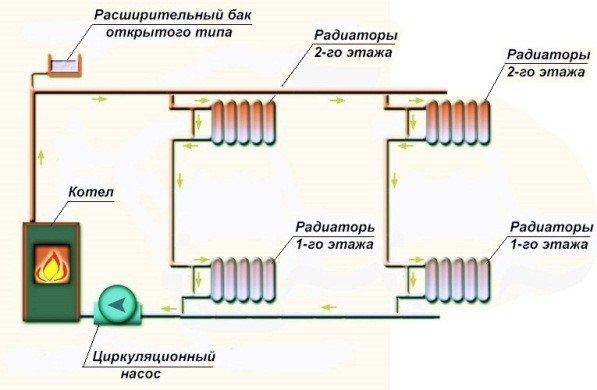

Single-pipe system diagram
Principle of operation
The coolant is forced into the system. The highest temperatures are observed at the beginning of the pipeline, the highest heat losses are observed at the most distant section of the network, while 80% of the effective circulation is accounted for by bypasses rather than radiators.
In older apartment buildings, temperature control was not carried out. The irrational consumption of electricity was compensated by its low cost.
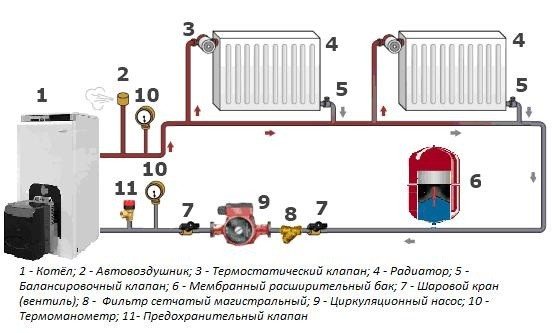

The principle of operation of a one-pipe system
Home automation
Modern one-pipe systems provide for the installation of thermostatic valves on the radiator assemblies. The diameters of the openings of the fluid passage and the valve are structurally made as large as possible to ensure a free outflow of the fluid (even in cases of contamination of the coolant).
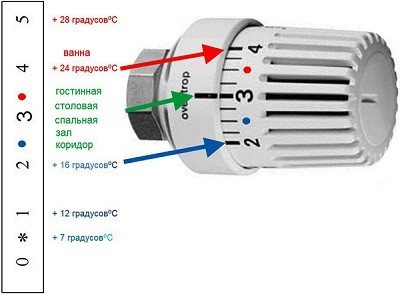

Thermostat type
Temperature control of radiators is carried out in three options:
- with a three-way valve;
- with a straight through valve;
- thermostatic.
When reducing (adding) sections of radiators and removing the thermostat, unbalance of the system will not occur.
The valve automatically closes when the room temperature rises above the set one. In this case, the coolant will only circulate through the bypasses. The total water consumption does not change.


Installing a thermostat on a radiator
Economical effect
In the presence of thermostats and overheating of living rooms, the general circulation does not decrease, only the safety valves are closed. The coolant does not circulate, but there is an increase in losses in the pipes, due to an increase in temperature on the reverse cycle. In multi-storey buildings, in which heat points are built, the DHW heat exchanger is powered from the return pipes of the system.
Important! For the safe and efficient operation of a one-pipe system with hidden laying, it is necessary to fix a layer of heat and waterproofing behind the pipes.
What is the best pipe material?
The method of installing the circuit, protection against corrosion and hydraulic resistance, all these indicators will depend on the material from which the pipeline is made. For the heating system, you can use polypropylene, steel, metal-plastic and copper pipes.
- Polypropylene material. Polypropylene pipes withstand high temperatures well, have a long service life (over 25 years), and are smooth inside. Installation requires special tools and is expensive.
- Steel. Despite the fact that such pipes are quite durable and have an affordable price, they are prone to corrosion and overgrowth. In addition, the installation requires welding or multiple fittings.
- Metal-plastic. Lightweight pipes have a perfectly smooth inner surface. As a result, they are free of corrosion and deposits. But after installation, you will have to constantly pull on the threaded fittings, which is a big drawback. Their service life is about 15 years, while for pipes this is very short. They have a high cost.
- Copper pipes. Copper pipes have a beautiful appearance and a service life of over 100 years. Soldering is used for installation, very expensive in cost.
To determine what pipe diameter suitable for warming up your home, you need to know that:
- The diameter of the pipe is selected according to the material from which the pipes are made and from the heat engineering calculations made.
- Calculate the amount of heat required for the room and add 20% to the result.
- Using the values indicated in the SNiP tables, the cross-section of the pipeline is calculated. For the calculation, take the readings of the heat capacity and the size of the pipe (internal section).
If, after each branching, install the supply pipe 1 size smaller than the previous one, then the circulation of the heat exchanger will become several times more intense. The return pipe is mounted with an extension. This calculates the minimum diameter of two pipes. Adhering to the obtained values, for each pipe section, its own size is established.
Coolant supply methods
The heating medium can circulate from the boiler to the heating device in two ways. Through the bottom or top filling.
- Bottom filling. This filling method is used only for one-pipe systems. The pipeline is laid at floor level, while vertical pipes can be omitted. Bottom filling is ineffective without a circular pump.
- Top filling. They are used for both one-pipe and two-pipe systems. Due to the fact that the distribution pipe is installed under the ceiling, the hot coolant is actively supplied to each radiator. Further, cooling down, the water goes into a return pipe mounted along the floor.
Two-pipe
This scheme is suitable for heating large one-story and two-story houses. The principle lies in the installation of two separate circuits - supply and return of the coolant.
Benefits:
- High-quality heating of premises.
- Heating uniformity: in the first and last radiators, the coolant temperature is almost the same. Depends only on the area of the house, the number of radiator sections and the length of the highway.
Disadvantages:
- Large pipe consumption for the construction of two separate pipelines to the boiler.
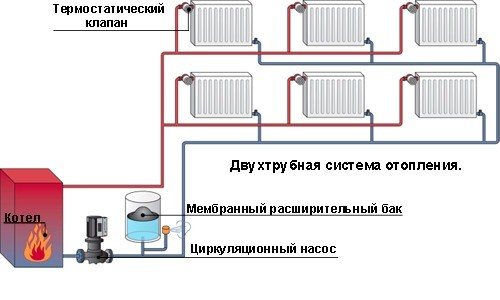

Diagram of a two-pipe heating system

